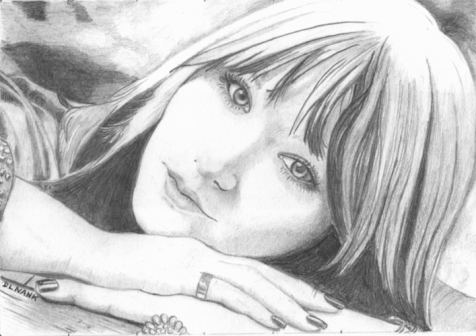
Horse Hug by Sheri Eichar
Prismacolor on Strathmore Bristol
Featured Artist:
Sheri Eichar
Wooster, Ohio
Topic of the month: Composition
The Rule of Thirds
Since we often are tempted to place the subject of our work right smack dab in the middle of the paper, I want to introduce the “Rule of Thirds”, AKA “The Golden Rule” of aesthetics.

The “Rule of Thirds” is a guideline to help you with composition.
In your mind, divide your paper in sections of nine equal parts focusing on the areas where the lines intersect. These points will be the best spots to place the most important element of your artwork whether your piece is horizontal or vertical. To achieve balance in your work, you may wish to place an object of less importance at the opposite intersection of lines.
You have followed the Rule of Thirds if you avoid placing the subject in the center square.
Since there are no hard and fast rules in art, don’t be intimidated by the Rule of Thirds. If you want to center the subject, remember that it is your artwork and you can do it your way.
FYI: One to three is a good proportion of vinegar to oil also. 🙂
Wayne County Fair
The Wayne County Fair is coming soon and I encourage all of you to enter at least one piece of your artwork.
Entries close on August 18th, so you still have time. Your artwork does not have to be delivered until September 5th or 6th.
If you need an entry form or want more information be sure to contact me.
Medina County Fair deadline is already past so I hope all of you who wanted to enter have done so.
Classes
The last classes of this session will be August 28th, 29th and 30th.
For more Info:
DianaGlanco.com







 Alex
Alex



